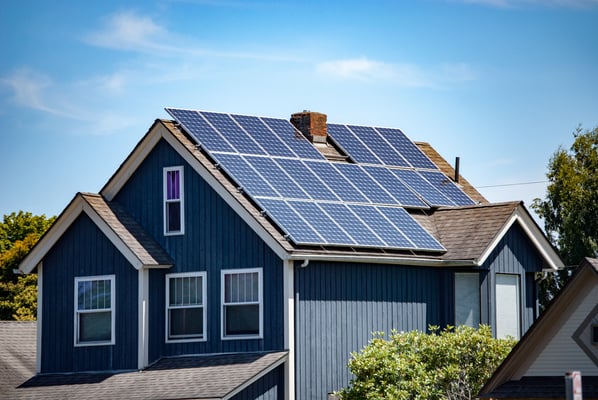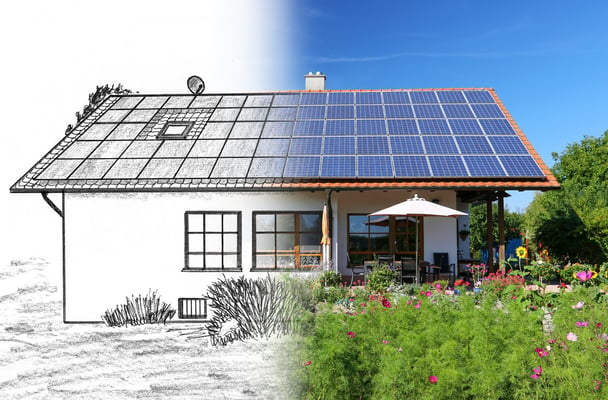Why Are Solar Panels So Popular in California?

The US solar industry experienced major growth within a decade, from 2.5 gigawatts of capacity in 2010, to over 81 gigawatts by mid-2020. In great part, this has been possible thanks to the federal tax credit for solar power systems, which is 26% as of 2020. However, solar power has not been adopted equally in all states, and California currently produces over 30% of the US solar generation. Before other states gave priority to solar power, California had over 50% of the nation’s installed capacity.
Many factors have contributed to the growth of solar power in California. The state has abundant sunshine and favorable legislation, combined with high kilowatt-hour prices that improve the business case for going solar. This article will provide an overview of the factors that have driven solar power adoption in California, which could be replicated in other states.
The state of New York has also emerged as a solar power leader in the US. While NY does not have the Californian sun, it offers incentives and favorable policies for solar power in homes and businesses. NY also has expensive electricity, increasing the monetary value of solar generation.
Improve your building resilience with on-site power generation.
Renewable energy sources can make buildings and communities more resilient during emergencies like the COVID-19 pandemic. Power plants fired by fossil fuels depend on global supply chains, while most forms of renewable generation use local resources. The main challenge is managing the variable power output of solar panels and wind turbines. However, emerging energy storage methods are a promising solution, once their upfront cost is reduced.
How Sunshine and Expensive Electricity Increase Solar Savings

Solar arrays of all scales use the same building blocks: solar panels, which are also known as photovoltaic panels or solar modules. Since solar panels and other components are highly standardized, their installed costs show little variation throughout the US.
- Before deducting tax credits and incentives, a small residential system will typically cost $3 per watt of capacity.
- A medium-sized business installation will typically cost around $2/watt.
- Large commercial, industrial, and utility systems can cost less than $1/watt.
On the other hand, sunshine and electricity prices are highly variable throughout the US, and both affect the financial return of solar power. Each solar panel produces more kWh per year in a sunny place, and expensive electricity increases the value of each kWh. California happens to have both conditions: the abundant sunshine boosts productivity, and expensive electricity makes solar energy very valuable.
Assuming a cost of $3/watt, a 6-kW solar power system costs around $18,000, which is reduced to $13,320 with the 26% federal tax credit. A system of this capacity can produce over 10,000 kWh annually in a good site, and electric tariffs above 20 cents/kWh are typical in California. Assuming annual savings of $2000, the PV system in this example has a payback period of 6-7 years, which is great for an investment that lasts over 25 years.
California’s Solar Policy and Incentive Programs

The combination of abundant sunshine and expensive electricity has been beneficial for the California solar industry. However, the state has also created favorable legislation for solar power, and there are several financing options available.
The Renewable Portfolio Standard in California is one of the most ambitious in the US, with a goal of 100% carbon-free electricity by 2045. The RPS is legally binding for electric companies, and those who miss the target will be charged major fines. A solid RPS supports legislation and incentive programs that favor clean energy, including solar power. California also has an excellent net metering law, and you get credit for any surplus electricity from your solar panels.
The Single-Family Affordable Solar Homes (SASH) program targets the low-income segment, and it offers a solar incentive of $3/watt. Since this is the typical cost of a residential installation, eligible households can go solar at little or no cost. SASH incentives are available for homeowners below 80% of the area median income, and their property must be classified as affordable housing. The benefit applies to customers of the three largest power companies in California: PG&E, SDG&E, and SCE.
Financing Options for Solar Power in California

California also offers financing options for solar power. Along with Florida, it is one of the two states with the Property Assessed Clean Energy (PACE) program. These loans can have a repayment period of up to 25 years, and they are charged along with property taxes. The interest rates of PACE loans vary, but they are typically below 10% and can be as low as 2.5%.
The only drawback of PACE loans is that they bring a property lien, which is removed until the loan is fully paid. Selling a property with a lien can be difficult, and for this reason, a PACE loan is only recommended if you have no plans to move.
Other financing options include a Home Equity Line of Credit (HELOC) and a PowerSaver Second Mortgage from the Federal Housing Administration (FHA). While these loans are not exclusive to California, they provide more options if you cannot get favorable conditions with PACE financing.
- Both loan types are characterized by long repayment periods: typically 10-15 years for a HELOC, and up to 20 years for PowerSaver Second Mortgage.
- Their interest rates vary: HELOCs below 5% are available depending on your credit record, and the PowerSaver Second Mortgage is typically between 4.99% and 9.99%.
Loan financing is an excellent option for going solar. The 26% tax credit can be claimed even when a solar power system is financed with a loan, and these funds become available for debt service. In addition, electricity savings start right away after deploying solar panels, and these funds can be used to pay the loan as well. In a few words, a solar power system can pay for itself, and the net cost for the owner becomes zero.

Michael Tobias
Michael Tobias, the Founding Principal of NY Engineers, currently leads a team of 50+ MEP/FP engineers and has led over 1,000 projects in the US
Join 15,000+ Fellow Architects and Contractors
Get expert engineering tips straight to your inbox. Subscribe to the NY Engineers Blog below.



